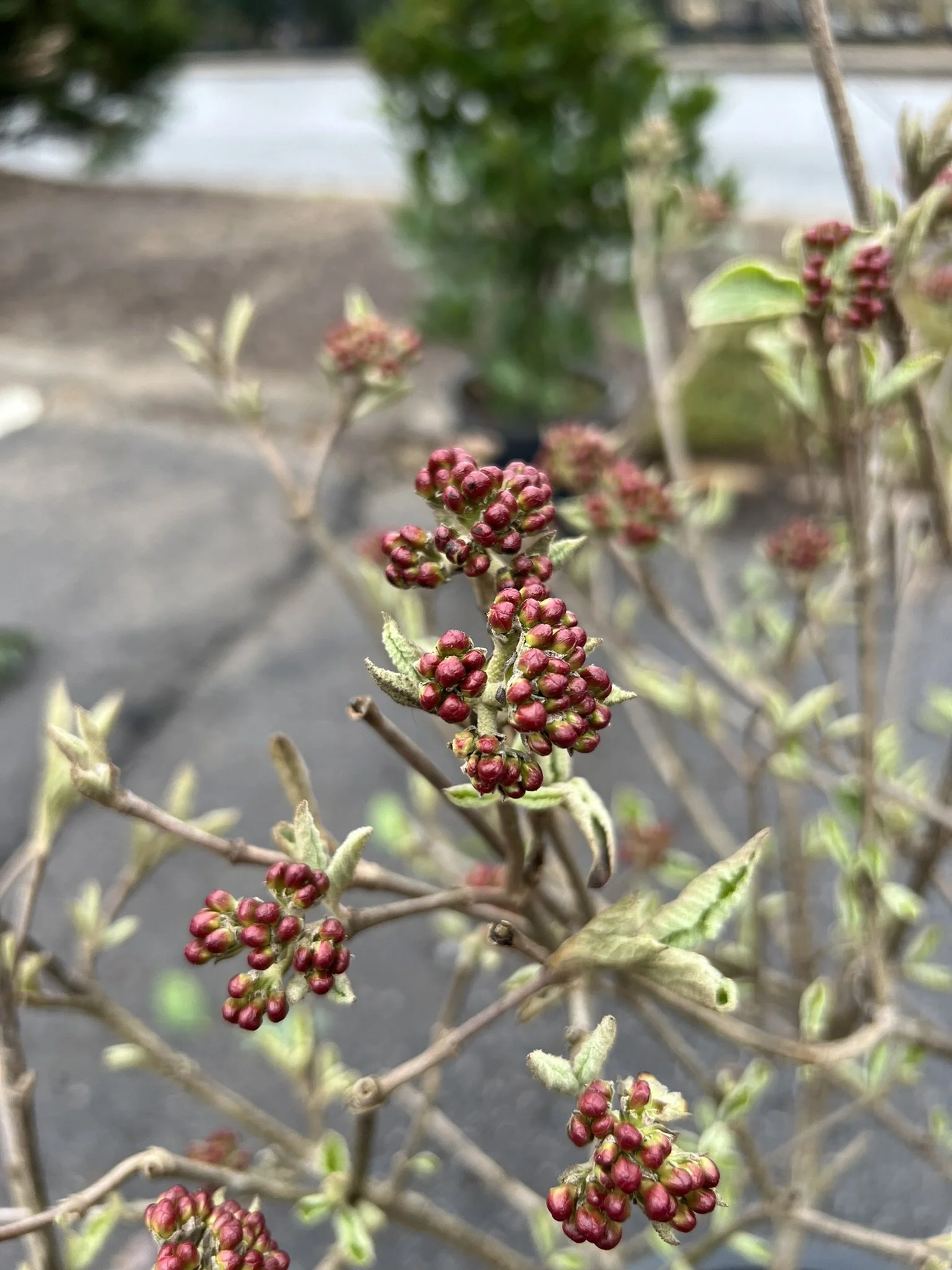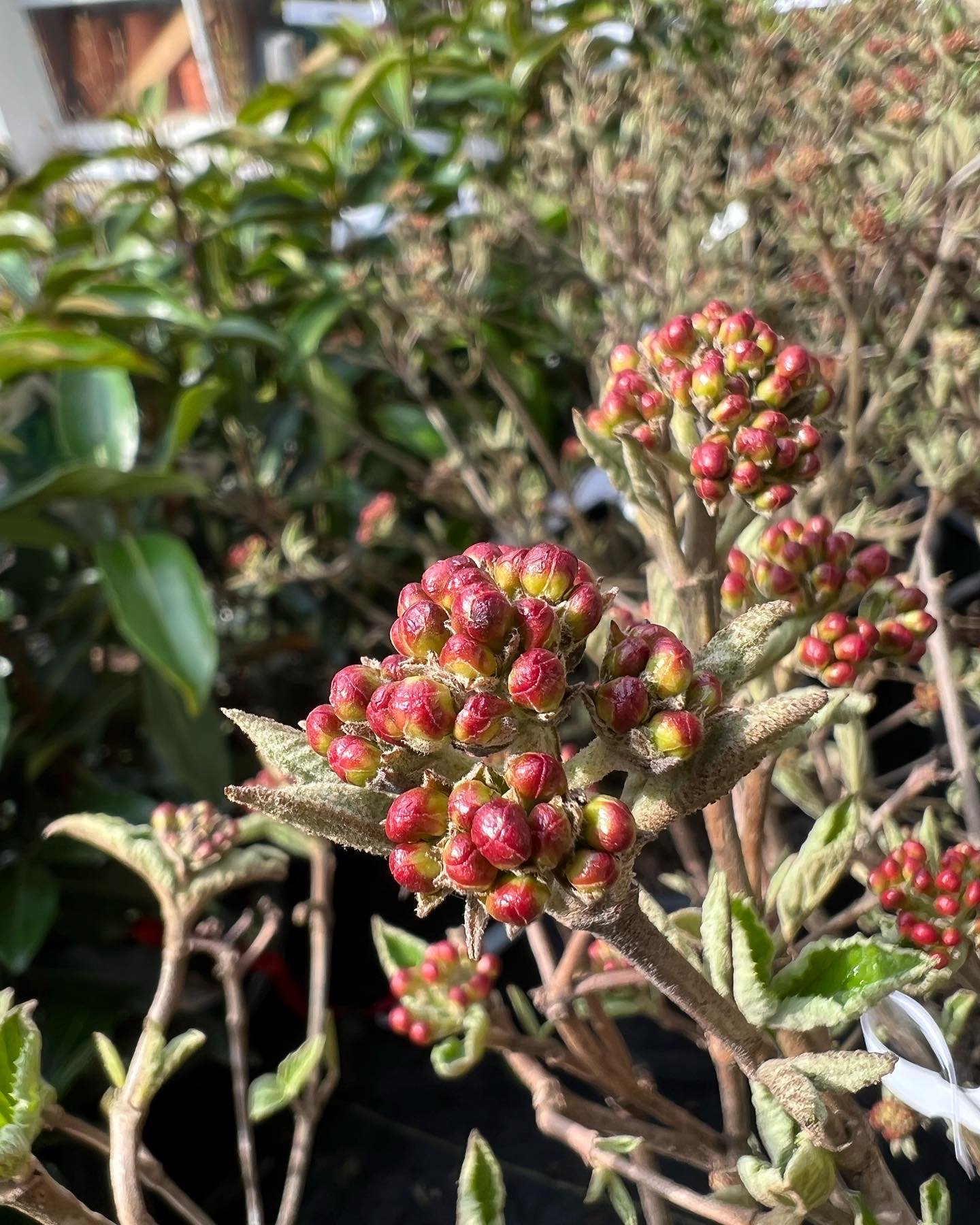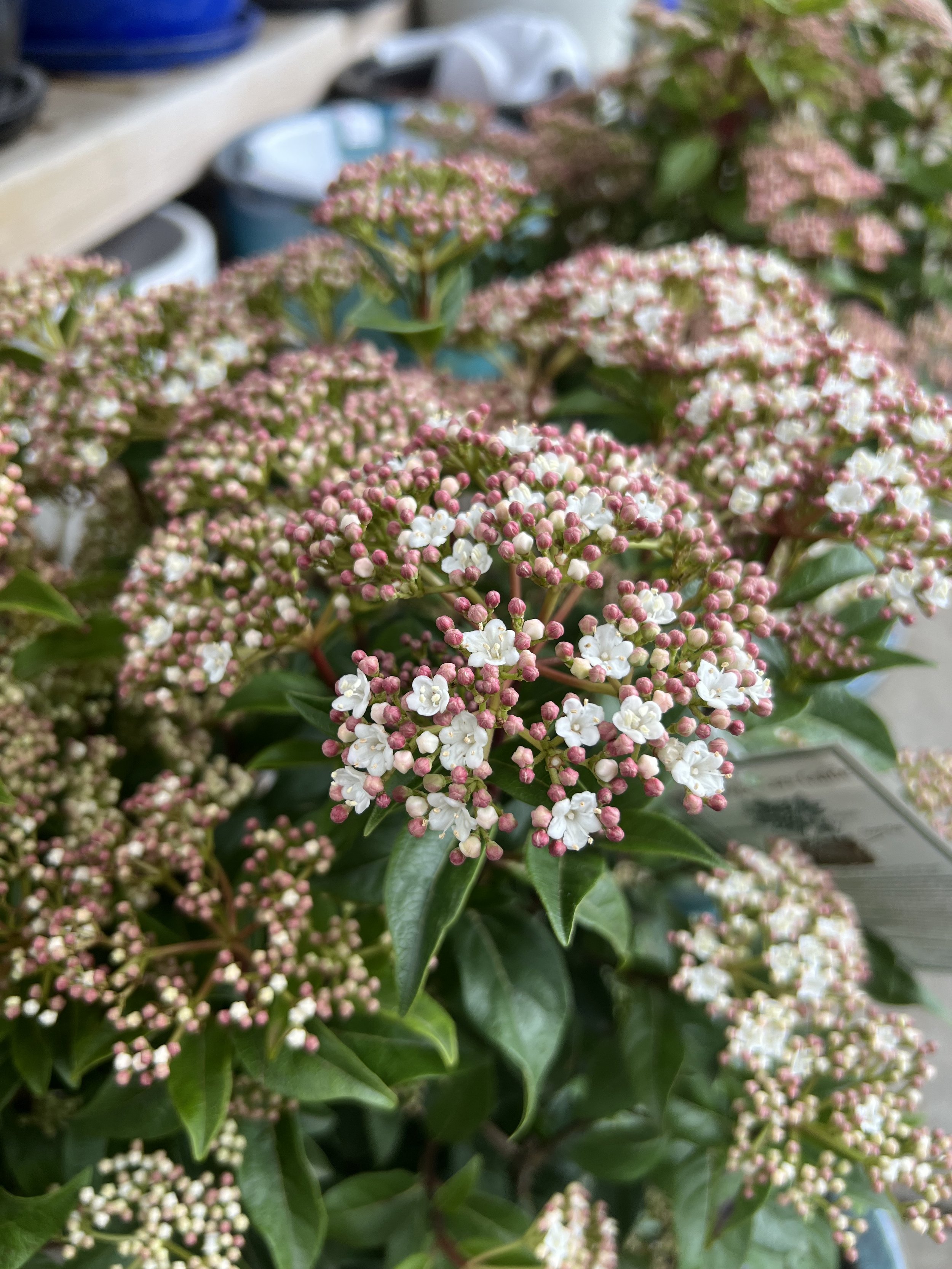Plant Profile: Viburnum
When it comes to versatile and attractive shrubs for your garden, few options rival the beauty and functionality of viburnums. They are cherished by gardeners worldwide for their ornamental appeal, hardiness, and diverse array of species. Let's take a look at why viburnums are a fantastic choice for enhancing your outdoor space.
Stunning Variety
One of the most appealing aspects is the sheer diversity within the genus. From compact, low-growing varieties like Viburnum tinus 'Compactum' to larger, multi-stemmed species such as Viburnum opulus, there's a viburnum to suit every garden style and size. With hundreds of species and cultivars available, you'll find options for every landscape need, whether you're seeking vibrant blooms, colorful foliage, or attractive berries.
Seasonal Interest
Viburnums are prized for their year-round beauty, offering something captivating in every season. In spring, many species produce clusters of fragrant flowers in shades of white, pink, or creamy yellow, attracting pollinators like bees and butterflies. As summer progresses, some viburnums display glossy green foliage, while others develop colorful berries that transition from red to blue-black, providing food for birds and wildlife. In autumn, certain varieties dazzle with fiery foliage hues, adding warmth and depth to the landscape.
Easy Care and Maintenance
For gardeners seeking low-maintenance plants that thrive with minimal effort, viburnums are an excellent choice. These hardy plants are adaptable to various soil types and environmental conditions, although they generally prefer well-drained, moderately fertile soil and a location with partial to full sunlight. Once established, viburnums typically require little pruning, although shaping and removal of dead or damaged branches can help maintain a tidy appearance and encourage healthy growth.
Ecological Benefits
Beyond their aesthetic appeal, viburnums provide valuable ecological benefits to the garden ecosystem. Their flowers attract pollinators, supporting the health of local bee populations and other beneficial insects. Additionally, the berries produced by many viburnum species serve as a vital food source for birds during the winter months, contributing to overall biodiversity and wildlife habitat enhancement.
Landscape Versatility
Whether used as specimen plants, hedges, or foundation plantings, viburnums excel in a variety of landscape applications. Their diverse growth habits, ranging from compact mounds to sprawling shrubs or small trees, offer endless design possibilities. Viburnums can be incorporated into mixed borders, woodland gardens, or native plantings, adding texture, color, and visual interest throughout the year.





